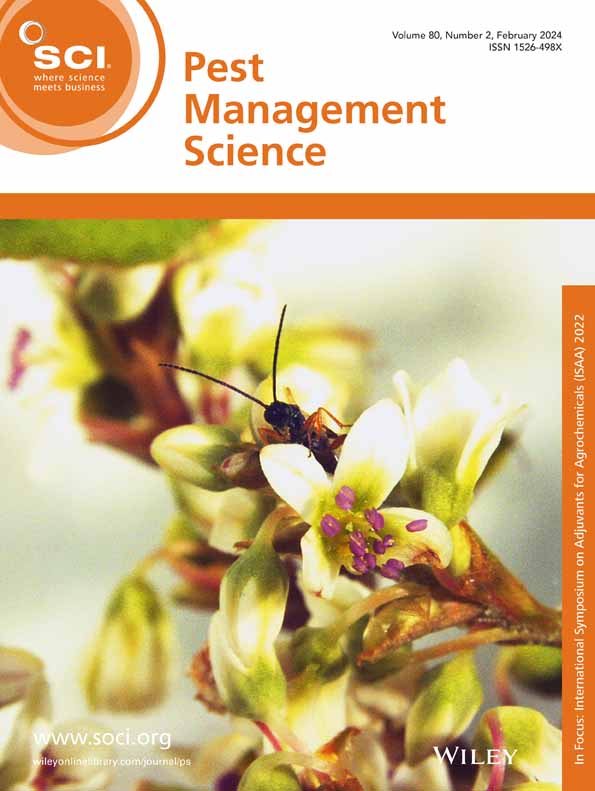Bacillus amyloliquefaciensHN11 enhances cowpea growth and systemic resistance to Spodoptera litura viaJA/SA pathways and growth‐mediated tolerance
IF 3.8
1区 农林科学
Q1 AGRONOMY
引用次数: 0
Abstract
BACKGROUNDPlant growth and development benefit from the contribution of plant growth‐promoting rhizobacteria (PGPR), which have a positive effect on plants by breaking down organic matter and synthesizing growth hormones. In addition, PGPR can stimulate plants to produce secondary metabolites, thereby enhancing its defense against pathogens and pests. To study the effects of解淀粉芽孢杆菌shn11通过aja /SA途径和生长介导的耐受性促进豇豆生长和对斜纹夜蛾的全身抗性
植物的生长发育得益于植物生长促进菌(plant growth - promoting rhizobacteria, PGPR)的贡献,它们通过分解有机物和合成生长激素对植物有积极作用。此外,PGPR可以刺激植物产生次生代谢物,从而增强其对病原体和害虫的防御能力。为研究解淀粉芽孢杆菌8421 (HN11)对豇豆抗虫能力的促进和诱导作用,根据表型性状和施用HN11后豇豆抗虫酶及植物激素水平的变化,确定其作用机制。结果HN11能有效定植豇豆根系,107 CFU mL−1 HN11处理15 d后,显著改善了豇豆的农艺性状和根系形态,特别是促进了根瘤重的增加(47.6%)。此外,当斜纹夜蛾幼虫攻毒时,接种了HN11的植株受到的伤害明显减少,恢复生长的能力更强。结果表明,HN11处理提高了豇豆防御酶活性和植物激素水平。值得注意的是,HN11通过促进植物生长和增强耐受性,间接影响了对斜纹紫荆的诱导防御。结论本研究为PGPR生物防治开辟了新途径,对提高作物产量、减少对化学农药的依赖、保护生态环境具有重要意义。©2025化学工业协会。
本文章由计算机程序翻译,如有差异,请以英文原文为准。
求助全文
约1分钟内获得全文
求助全文
来源期刊

Pest Management Science
农林科学-昆虫学
CiteScore
7.90
自引率
9.80%
发文量
553
审稿时长
4.8 months
期刊介绍:
Pest Management Science is the international journal of research and development in crop protection and pest control. Since its launch in 1970, the journal has become the premier forum for papers on the discovery, application, and impact on the environment of products and strategies designed for pest management.
Published for SCI by John Wiley & Sons Ltd.
 求助内容:
求助内容: 应助结果提醒方式:
应助结果提醒方式:


